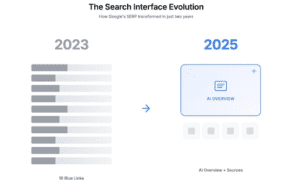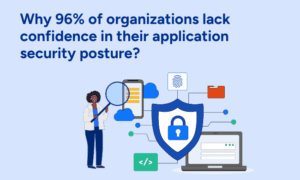Today, the retail industry is faced with numerous challenges, ranging from high employee turnover rates to the changing dynamics of customer expectations. Amid these complexities, Smart Tech emerges as a critical player in building an engaged and efficient workforce. Utilizing a blend of technologies such as Internet of Things (IoT), Artificial Intelligence (AI), Augmented Reality (AR), and analytics, retailers can foster a culture of engagement, productivity, and customer satisfaction.
Understanding the Smart Tech Landscape in Retail
Smart Tech comprises various technological tools designed to automate processes, enhance decision-making, and drive performance improvements. It includes IoT devices for inventory management, AI algorithms for data analysis, AR for training, and data analytics for deriving actionable insights.
A study by Deloitte reveals that 56% of businesses are redesigning their HR programs to leverage digital and mobile tools, indicating a shift towards a more connected, data-driven approach to employee management.
Driving Engagement Through Smart Tech
Smart Tech has multiple benefits such as enabling efficient and real-time communication, fostering a sense of collaboration and community within the workforce. Also, AR and VR can provide immersive training experiences, equipping employees with critical skills in an engaging and interactive manner. AI and analytics offer an objective, data-driven approach to performance management, allowing for personalized feedback and continuous improvement; and AI can handle routine tasks to free up employees for other tasks.
Effective Communication: With smart technologies such as IoT and mobile applications, retailers can ensure real-time, efficient communication among employees, management, and customers. According to the Retail Industry Leaders Association, 58% of retailers see employee engagement tools as a priority investment, given their role in promoting transparent communication, building relationships, and fostering a culture of inclusivity.
Improved Training: AR and Virtual Reality (VR) are revolutionizing training in the retail industry. Using AR/VR, retailers can simulate real-world scenarios, offering employees a safe, interactive environment to learn and practice skills. A Capgemini study reveals that 82% of companies implementing AR/VR say the benefits exceed their expectations, and PwC projects that nearly 23.5 million jobs worldwide will be using AR and VR for training by 2030.
Data-Driven Performance Management: AI and analytics offer retailers a way to assess employee performance objectively. Using data collected from various touchpoints, managers can gain insights into individual performance, identify areas of improvement, and offer constructive feedback. McKinsey reports that organizations using AI and predictive analytics have seen a 5-10% increase in performance, emphasizing the value of a data-driven approach.
Automating Routine Tasks: Smart Tech plays a transformative role in streamlining operations by automating routine tasks, bringing about a significant change in the retail work environment. Technologies such as AI and IoT are capable of handling various mundane tasks, such as inventory tracking, checkout processes, and even complex HR functions like payroll and recruitment. This automation not only increases efficiency and reduces the chance for human error, but also frees up employees to engage in more strategic, high-value tasks. Instead of focusing on repetitive work, employees can devote their time and skills to roles that directly impact customer experiences, such as personalized customer service, problem-solving, or improving in-store experiences.
Efficiency and Productivity Enhancements
As we just mentioned, smart tech can automate routine tasks, freeing up employees to focus on more strategic, customer-facing roles. What does that look like in action? Well, IoT devices can handle inventory management, while AI can streamline HR processes like recruitment and payroll. According to a study by Accenture, AI could increase labor productivity by up to 40% by 2035.
This results in a more engaged workforce, enhances job satisfaction, and ultimately, contributes to an improved and more personalized customer experience. It also leads to a more customer-centric focus by freeing up human employees to focus on their customers.
Developing a Customer-Centric Workforce
That’s not the limit of how Smart Tech can help keep companies customer-centric, though. Smart Tech offers employees customer data and insights, which creates a more personalized approach. Employees can use this information to tailor their interactions and offer recommendations, enhancing the customer experience and driving sales. It also increased customer loyalty, as customers are receiving more personalized service designed just for them.
Future of Workforce Engagement in Retail
The future of workforce engagement in retail lies in a smart, connected, and data-driven approach. Emerging technologies like 5G will further enhance real-time communication and data analysis capabilities, while advancements in AI, AR, and VR will offer more sophisticated training and performance management tools.
A Smarter Retail Industry
As the retail industry evolves, the role of Smart Tech in building an engaged workforce becomes increasingly vital. Retailers who leverage these technologies will be better equipped to meet the challenges of the modern retail landscape, driving engagement, productivity, and customer satisfaction. In this digital age, developing a Smart Tech-enabled workforce is not just a competitive advantage—it’s a necessity.
About Sandeep Shekhawat

Sandeep Shekhawat currently serves as the Director of Engineering at Walmart Labs USA. He has worked with Meta/WhatsApp, Apple, and Yahoo and is a Cornell University graduate with a Masters in Computer Science. Shekhawat specializes in enterprise Internet of Things (IoT) applications, specifically in the realm of Smart Retail. At Walmart Labs, Shekhawat continues to advance IoT solutions, enabling efficient store operations through the collection of data from devices and machinery.
LinkedIn: https://www.linkedin.com/in/sandeepshekawat





























